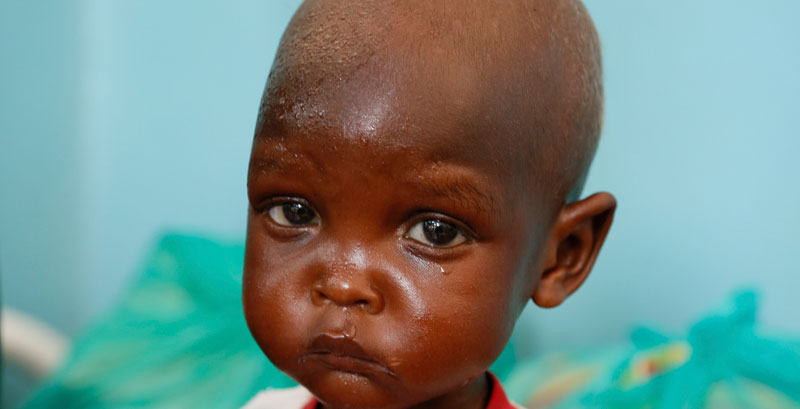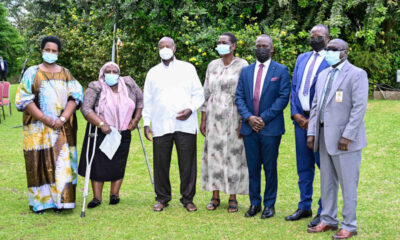Guest Writer
Why children in Western Uganda suffer higher rates of malnutrition
Sandwiched between Bombo and Buganda roads, the Police Post at Wandegeya does not only receive criminals and complainants, but in its backyard, smartly dressed men and women flock the premises during lunch-break to partake of “local food.”
That’s a reference to the food eaten by a particular community/region: east, north, central, and west. These local food joints mark a sharp divide between clients coming from Western Uganda and those that come from the east and north.
The divide is in who prepares the food, the type of food prepared and who eats that food.
The first joint belongs to a lady from Western Uganda. She prepares the usual meals of chicken, fish and beef, with little or no form of any green vegetables.
The next joint, on the other hand, is owned by a lady from the East and has a menu that reads like Malakwang (hibiscus leaves) and Ggobe (cowpea leaves), all mixed in simsim, or groundnut sauce.
These scenarios point to two important factors: people rarely change the diets they grew eating; and food from the north and east has more green vegetables, with simsim providing additional supplements.
The green vegetables that are common in the north and east provide micronutrients like vitamin A, iron and zinc, which are key in childhood development and good for expecting mothers.
Uganda’s nutrition profile by the United States Agency for International Development (USAID) shows that western Uganda, despite having more food, registers the highest prevalence of stunting in children under five.
It concludes that producing more staple food does not guarantee improved nutrition. The food and nutrition policy of 2013, which was meant to address this disparity, has not been effectively translated into action. This has become characteristic of most Ugandan Policies that are good on paper but never get implemented.
The Uganda Nutrition Action Plan 2011-2016 recognizes bio-fortification as a key component in overcoming nutritional challenges. Ugandan scientists have already responded to this challenge by developing food crop varieties with increased levels of these micronutrients.
These include conventionally bred, orange-fleshed sweet potatoes with higher levels of beta carotene to address vitamin A deficiency. The National Agricultural Research Organisation (NARO) also recently released beans that are rich in iron and zinc.
According to the United Nations Children’s Fund (UNICEF)’s web page on nutrition, “Iron deficiency can lead to anaemia, which increases the risk of hemorrhage and bacterial infection during childbirth and is implicated in maternal deaths.
On the other hand, iron deficiency can cause premature births in addition to weakening the immune system and expose the mother to infections, learning disabilities, and delayed development.
Zinc deficiency on the other side impairs immune function and is associated with an increased risk of gastrointestinal infections. It is also a contributing factor in child deaths due to diarrhea.”
Despite the food fortification efforts, staples like bananas and cassava still are lacking in key micro-nutrients. Fortunately, are efforts are under way to enhance the micro-nutrient level of these crops through the process of bio-fortification, which is used in plant breeding methods to enhance nutrient levels in a particular food crop.
Bio-fortification of staples like bananas is key in addressing the “hidden hunger” phenomenon in infants and expecting mothers. Genetic engineering is currently the only successful method for bio-fortifying bananas. Researchers have conducted various confined field trials of these enhanced bananas, and the results have been promising.
But scientists cannot carry out feeding trials in Uganda until Parliament passes the bio-safety law. In the absence of the law, researchers working on the trials tried to carry out feeding trials at Iowa State University in the United States.
This project was met with resistance, including petitions signed by organizations in the United States, some of which are based in Uganda. One of their claims was that Africans eat bananas differently than people in the US or Europe, who do not consume them as a staple.
Until Uganda passes its biosafety law, this project, which could provide farmers with this great banana, will remain stagnant as millions of infants and children continue to suffer socially and physiologically from the harmful effects of stunting.
Introducing new foods to Ugandans may not be viable, as evidenced by the adults who stick to their regional childhood diets when they come to eat lunch at the Wandegeya police barracks.
Instead, nutrients must be added to familiar, traditional crops so that they can produce fruits or tubers that are rich in vitamin A and other micronutrients. As the director of the National Planning Authority pointed out at the launch of the NPA report, passage of the biosafety bill is key to addressing the irony of eating food that fills the stomach, but is devoid of key micronutrients.
 Isaac Ongu is an Agricultural Communications Expert
Isaac Ongu is an Agricultural Communications Expert
isaacongu{at}gmail.com
Twitter:@onguisaac
Comments




























